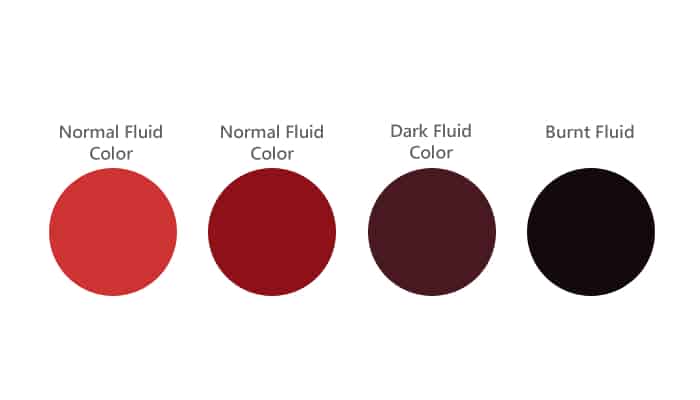Understanding Transmission Fluid for Your Charger
When it comes to maintaining your 2012 Dodge Charger, one of the most critical aspects is ensuring you have the right transmission fluid. The transmission fluid not only lubricates the moving parts within the transmission but also helps in cooling and cleaning the system. Using the correct type of fluid is essential for optimal performance and longevity of your vehicle.
Manufacturer’s Recommendations
| Popular posts |
|---|
| What to do to prolong the life of your manual gearbox |
| Automatic transmission: what it is, how it works |
For the 2012 Dodge Charger, Chrysler recommends using Mopar ATF+4 transmission fluid. This fluid is specifically formulated to meet the needs of the automatic transmission in your Charger. Here’s why sticking to this recommendation is crucial:
Specifications of Mopar ATF+4
– Type: Synthetic Automatic Transmission Fluid
– Viscosity: Designed to operate effectively across a wide temperature range
– Additives: Contains special additives that enhance performance, reduce wear, and prevent foaming
Why Mopar ATF+4?
1. Compatibility: Mopar ATF+4 is engineered to work seamlessly with the transmission components in your Charger. Using a different type of fluid can lead to poor performance and potential damage.
2. Performance: This fluid provides excellent lubrication, which is vital for the smooth operation of your transmission. It helps in reducing friction and wear, ensuring that your vehicle shifts smoothly.
3. Temperature Stability: The synthetic nature of ATF+4 allows it to maintain its viscosity under extreme temperatures, preventing breakdown and ensuring reliable performance in both hot and cold conditions.
4. Cleaning Properties: The additives in Mopar ATF+4 help keep the transmission clean by preventing sludge and varnish buildup. This is crucial for maintaining the efficiency of your transmission over time.
Checking for Quality
When purchasing transmission fluid, always look for the Mopar label to ensure you are getting the right product. Avoid generic or off-brand fluids that claim compatibility, as they may not meet the stringent requirements set by Chrysler.
Signs of Wrong Fluid Usage
Using the incorrect transmission fluid can lead to several issues, including:
– Slipping Gears: If the fluid doesn’t provide adequate lubrication, you may experience slipping or delayed engagement.
– Overheating: Incorrect fluid can lead to overheating, which can damage internal components.
– Erratic Shifting: You might notice harsh or erratic shifting if the fluid is not suitable for your transmission.
In summary, using Mopar ATF+4 is not just a recommendation; it’s a necessity for the health and performance of your 2012 Dodge Charger’s transmission. Always prioritize quality and compatibility to keep your vehicle running smoothly.
Recommended Oil Brands for Your Charger
When it comes to choosing the right transmission fluid for your 2012 Dodge Charger, many owners turn to various brands based on personal experiences and feedback from automotive forums. While Mopar ATF+4 is the manufacturer-recommended fluid, several other brands have gained a reputation for quality and reliability among Charger enthusiasts. Here’s a look at some of the most recommended oil brands based on owner feedback.
Mopar ATF+4
– Manufacturer’s Choice: As the OEM fluid, Mopar ATF+4 is the go-to choice for many owners. It’s specifically designed for Chrysler vehicles, ensuring compatibility and performance.
– User Feedback: Many owners report that using Mopar ATF+4 leads to smoother shifts and better overall transmission performance. It’s often praised for its ability to maintain performance in extreme temperatures.
Valvoline MaxLife ATF
– Synthetic Blend: Valvoline MaxLife ATF is a synthetic blend that meets the requirements for ATF+4. It’s designed for high mileage vehicles and offers excellent protection against wear.
– Owner Insights: Users on various forums have noted that Valvoline MaxLife provides a noticeable improvement in shifting quality, especially in older Chargers. Many appreciate its cleaning properties, which help keep the transmission free from sludge.
Castrol Transmax ATF+4
– High Performance: Castrol Transmax ATF+4 is another popular choice among Charger owners. It’s formulated to provide maximum protection and performance.
– Community Feedback: Owners have shared positive experiences regarding its ability to reduce noise and improve shift quality. Many have switched to Castrol after experiencing issues with other brands.
Royal Purple Max ATF
– Premium Synthetic: Royal Purple Max ATF is a high-performance synthetic fluid that claims to provide superior protection and performance. It’s designed for both new and older transmissions.
– User Experiences: Feedback from users indicates that Royal Purple can enhance responsiveness and smoothness during gear changes. Some owners report that it helps with temperature control, especially in demanding driving conditions.
Amsoil Signature Series ATF
– Long-Lasting Protection: Amsoil Signature Series ATF is known for its extended drain intervals and high thermal stability. It’s a fully synthetic fluid that meets ATF+4 specifications.
– Owner Testimonials: Many users rave about the longevity of Amsoil, often reporting that they can go longer between changes without sacrificing performance. It’s particularly favored by those who drive their Chargers in more aggressive conditions.
Other Notable Mentions
While the above brands are among the most recommended, several other options have been discussed in forums and owner groups:
– Mobil 1 Synthetic ATF: Known for its high-quality synthetic formulation, it’s often mentioned for its excellent performance in various conditions.
– Pennzoil Platinum ATF: Another synthetic option that has garnered positive reviews for its compatibility and performance.
What to Consider When Choosing a Brand
When selecting a transmission fluid brand, consider the following:
– Compatibility: Ensure that the fluid meets ATF+4 specifications.
– Driving Conditions: If you drive in extreme conditions, look for fluids that offer better thermal stability and protection.
– Owner Feedback: Check forums and owner reviews to gauge real-world performance and reliability.
In summary, while Mopar ATF+4 is the recommended choice, many owners have found success with alternative brands like Valvoline, Castrol, Royal Purple, and Amsoil. Always prioritize quality and compatibility to keep your Charger’s transmission running smoothly.
Change Interval for Your Charger’s Transmission Fluid
Maintaining the right change interval for your 2012 Dodge Charger’s transmission fluid is crucial for ensuring optimal performance and longevity. While the manufacturer may provide a general guideline, real-world driving conditions and habits can significantly influence how often you should change your fluid.
Recommended Change Interval
For the 2012 Dodge Charger, the general recommendation for changing the transmission fluid is typically around 60,000 to 100,000 miles (approximately 96,000 to 160,000 kilometers ). However, this can vary based on several factors:
Driving Conditions
– Severe Driving Conditions: If you frequently drive in stop-and-go traffic, tow heavy loads, or operate in extreme temperatures, you may need to change your transmission fluid more frequently.
– Normal Driving Conditions: For those who primarily drive on highways and maintain a consistent speed, the longer intervals may be sufficient.
Partial Transmission Oil Changes
In many cases, a full transmission fluid change is not feasible without removing the transmission from the vehicle. This is due to the design of modern automatic transmissions, which often do not have a drain plug. Instead, a partial fluid change is more common and can still be effective in maintaining fluid quality.
Why Partial Changes Are Necessary
1. Fluid Degradation: Over time, transmission fluid can break down due to heat and contamination. A partial change helps to refresh the fluid without the need for a complete system overhaul.
2. Cost-Effective Maintenance: Full fluid changes can be labor-intensive and costly. Partial changes allow for more frequent maintenance without breaking the bank.
3. Contaminant Removal: While a full change removes all fluid, a partial change can still help to reduce the concentration of contaminants and debris that accumulate over time.
How to Perform a Partial Change
– Drain and Refill: This method involves draining a portion of the fluid (usually around 4 to 5 quarts) and replacing it with fresh fluid. This can be done during routine maintenance or oil changes.
– Fluid Exchange Machines: Some shops use fluid exchange machines that replace the old fluid with new fluid while the engine runs, ensuring a more thorough mix and replacement.
Statistical Data and Authoritative Sources
According to the Automatic Transmission Service Group (ATSG), regular maintenance of transmission fluid is essential for preventing costly repairs. They recommend monitoring fluid condition and changing it based on driving habits rather than strictly adhering to mileage intervals.
Additionally, a study by the Society of Automotive Engineers (SAE) indicates that vehicles with regularly changed transmission fluid experience significantly lower failure rates compared to those that do not. This highlights the importance of maintaining fluid quality, whether through full or partial changes.
In summary, while the recommended change interval for your Charger’s transmission fluid is between 60,000 to 100,000 miles, considering your driving conditions and opting for partial changes can help maintain the health of your transmission more effectively.
What Color Should Transmission Fluid Be?


